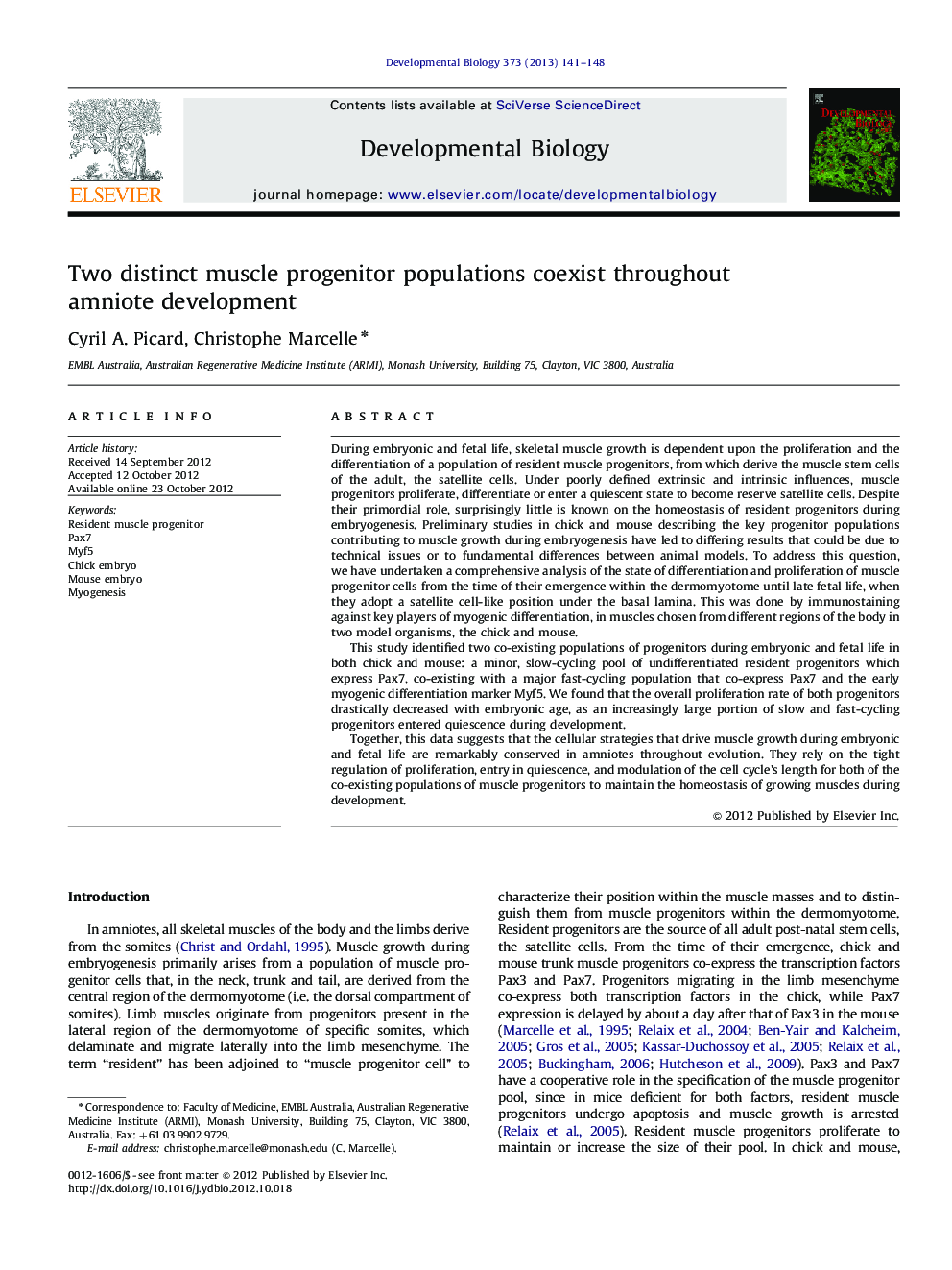| کد مقاله | کد نشریه | سال انتشار | مقاله انگلیسی | نسخه تمام متن |
|---|---|---|---|---|
| 2173142 | 1093697 | 2013 | 8 صفحه PDF | دانلود رایگان |

During embryonic and fetal life, skeletal muscle growth is dependent upon the proliferation and the differentiation of a population of resident muscle progenitors, from which derive the muscle stem cells of the adult, the satellite cells. Under poorly defined extrinsic and intrinsic influences, muscle progenitors proliferate, differentiate or enter a quiescent state to become reserve satellite cells. Despite their primordial role, surprisingly little is known on the homeostasis of resident progenitors during embryogenesis. Preliminary studies in chick and mouse describing the key progenitor populations contributing to muscle growth during embryogenesis have led to differing results that could be due to technical issues or to fundamental differences between animal models. To address this question, we have undertaken a comprehensive analysis of the state of differentiation and proliferation of muscle progenitor cells from the time of their emergence within the dermomyotome until late fetal life, when they adopt a satellite cell-like position under the basal lamina. This was done by immunostaining against key players of myogenic differentiation, in muscles chosen from different regions of the body in two model organisms, the chick and mouse.This study identified two co-existing populations of progenitors during embryonic and fetal life in both chick and mouse: a minor, slow-cycling pool of undifferentiated resident progenitors which express Pax7, co-existing with a major fast-cycling population that co-express Pax7 and the early myogenic differentiation marker Myf5. We found that the overall proliferation rate of both progenitors drastically decreased with embryonic age, as an increasingly large portion of slow and fast-cycling progenitors entered quiescence during development.Together, this data suggests that the cellular strategies that drive muscle growth during embryonic and fetal life are remarkably conserved in amniotes throughout evolution. They rely on the tight regulation of proliferation, entry in quiescence, and modulation of the cell cycle's length for both of the co-existing populations of muscle progenitors to maintain the homeostasis of growing muscles during development.
► We analyzed differentiation, proliferation and quiescence of muscle progenitors.
► It was done during chick and mouse embryo development and on various muscle groups.
► We identified two distinct populations of progenitors.
► One is slow cycling, stem-like; the second is transit-amplifying-like.
► Properties of resident progenitors have been conserved from bird to rodent.
Journal: Developmental Biology - Volume 373, Issue 1, 1 January 2013, Pages 141–148